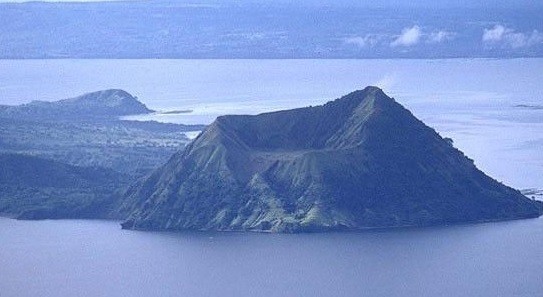12/10/2023
12/10/2023

MANILA, Philippines, Oct 12, (Agencies): On Oct 12, Taal Volcano in the Batangas province of the Philippines recorded its highest sulfur dioxide (SO2) emissions of the year, releasing a staggering 9,762 tons per day. The Philippine Institute of Volcanology and Seismology (Phivolcs) issued a warning to the public, highlighting the notable and sustained increase in volcanic degassing.
According to Phivolcs, visual monitoring showed significant upwelling of volcanic fluids within the primary crater, resulting in the production of relatively short and moderately voluminous degassing plumes. Sulfur dioxide is a key gas component found in magma, and its elevated levels have been a concern since March 2021.
Since September 2023, daily SO2 emissions have averaged around 3,781 tons. These heightened levels of sulfur dioxide have given rise to volcanic smog, known as vog, affecting various areas in Batangas and its vicinity. This has led to health issues and disruptions in educational institutions.
Although no vog was reported in the Taal area on Thursday, Phivolcs cautioned that it could recur if the ongoing intense degassing persists and wind speeds significantly decrease during the upcoming weekend, as forecasted by the weather bureau. Vog comprises fine droplets containing acidic volcanic gases such as SO2, which can irritate the eyes, throat, and respiratory tract. Those most at risk include individuals with respiratory and heart conditions, the elderly, pregnant women, and children.
To mitigate the effects of vog, Phivolcs recommended that affected individuals remain indoors, seal doors and windows, use N95 face masks, and seek medical attention if necessary. Additionally, during periods of rainfall and volcanic gas emission, acid rain is possible, which may harm crops and metal roofs of structures.
Taal Volcano has been under Alert Level 1, signifying an abnormal condition, since July 11, 2022. Possible volcanic activities include sudden steam-driven or phreatic explosions, volcanic earthquakes, minor ashfall, and the release of hazardous volcanic gases. Entry into Taal Volcano Island, a designated permanent danger zone, remains strictly prohibited.


